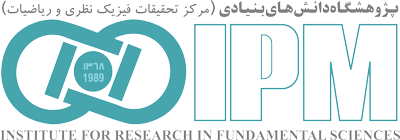“School of Particles And Accelerator”
Back to Papers HomeBack to Papers of School of Particles And Accelerator
| Paper IPM / Particles And Accelerator / 17493 | ||||||||||||||||
|
||||||||||||||||
| Abstract: | ||||||||||||||||
|
We study the inhomogeneous phase of a two-flavor quark matter under rotation at finite temperature and density using the Nambu-Jona-Lasinio model. To do this, we consider the chiral broken phase, in particular, described by the so-called dual chiral density wave which is formed as a standing wave of simultaneous scalar and pseudoscalar condensates. The solution of the corresponding Dirac equation as well as the energy spectrum found in the mean-field approximation. We then use the thermodynamic potential calculated for this model, to study the μ and Ω dependence of constituent mass and the wave vector at T=0. We find there exist two islands in the μ−Ω plane that the dual-chiral density wave survives. The first region lies at intermediate densities and small Ω. We observe, by increasing the angular velocity of matter, dual-chiral density wave forms in regions with smaller chemical potential. On the other hand, in contrast to the former, the second region is located at the large Ω and small densities. Finally, we study this phase of quark matter at finite temperature and present T−μ, T−Ω, and μ−Ω phase portraits of a hot-rotating quark matter at finite density.
Download TeX format |
||||||||||||||||
| back to top | ||||||||||||||||



















